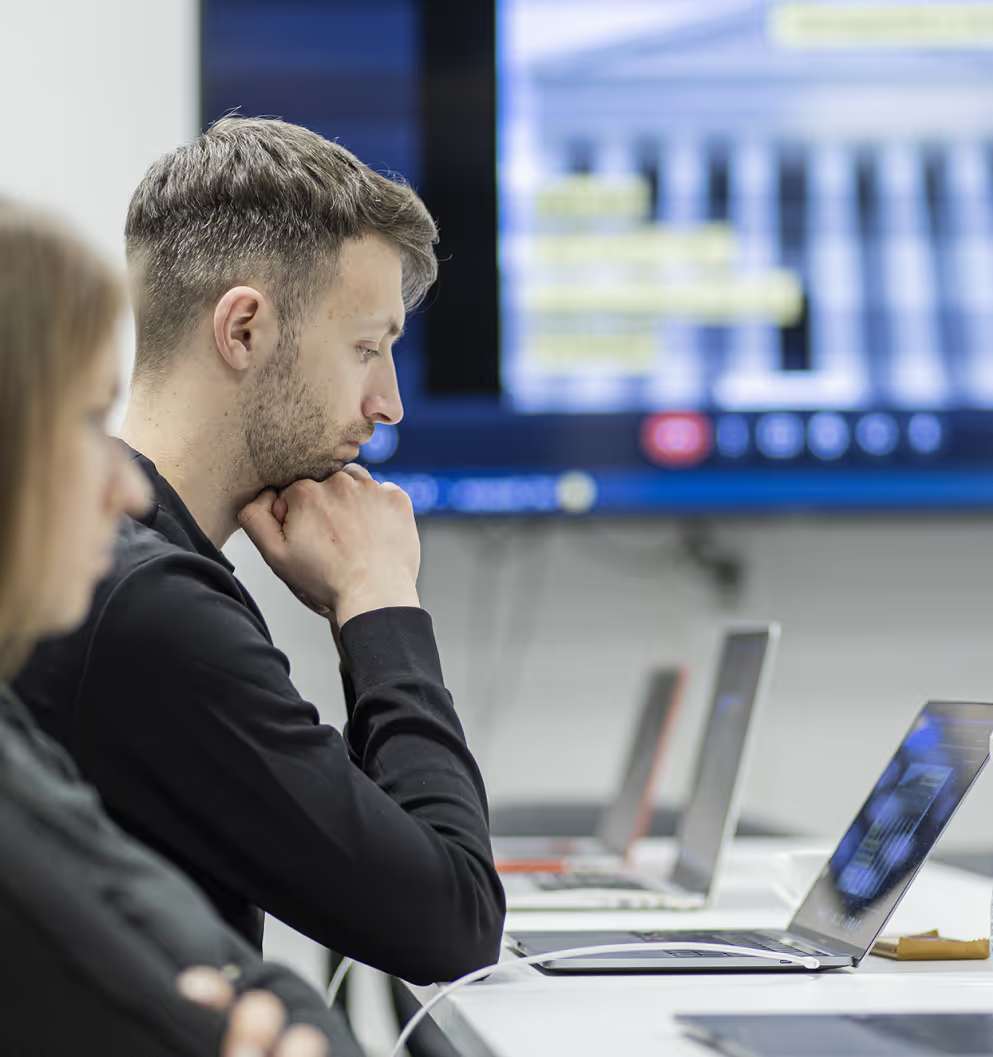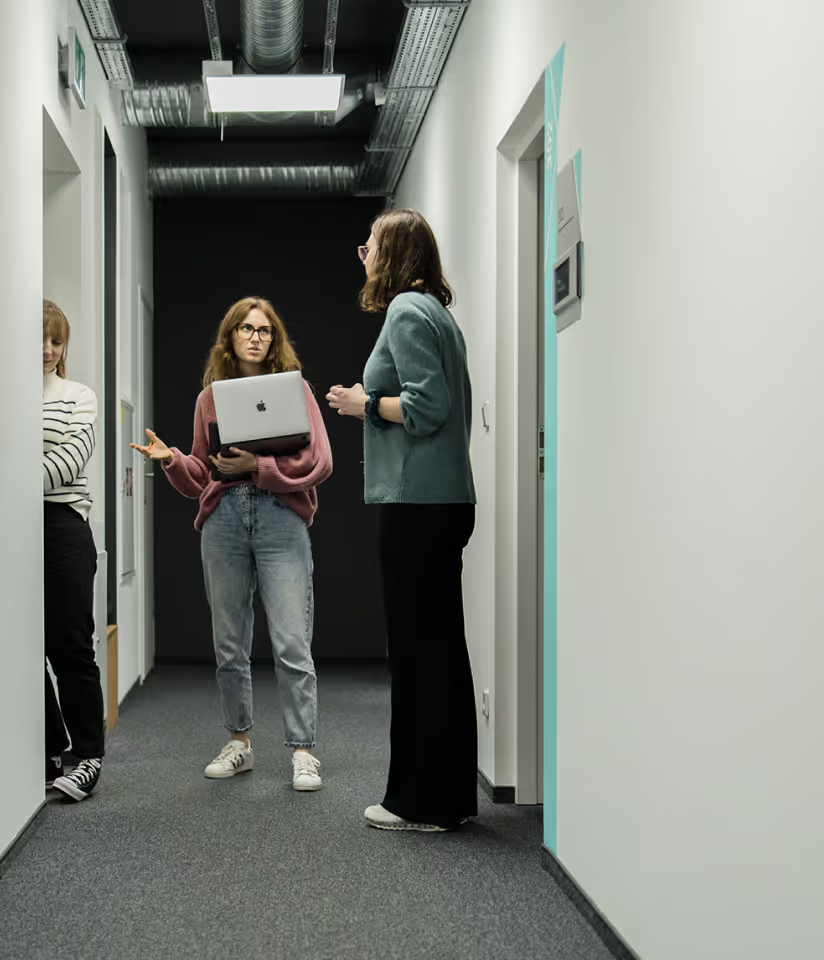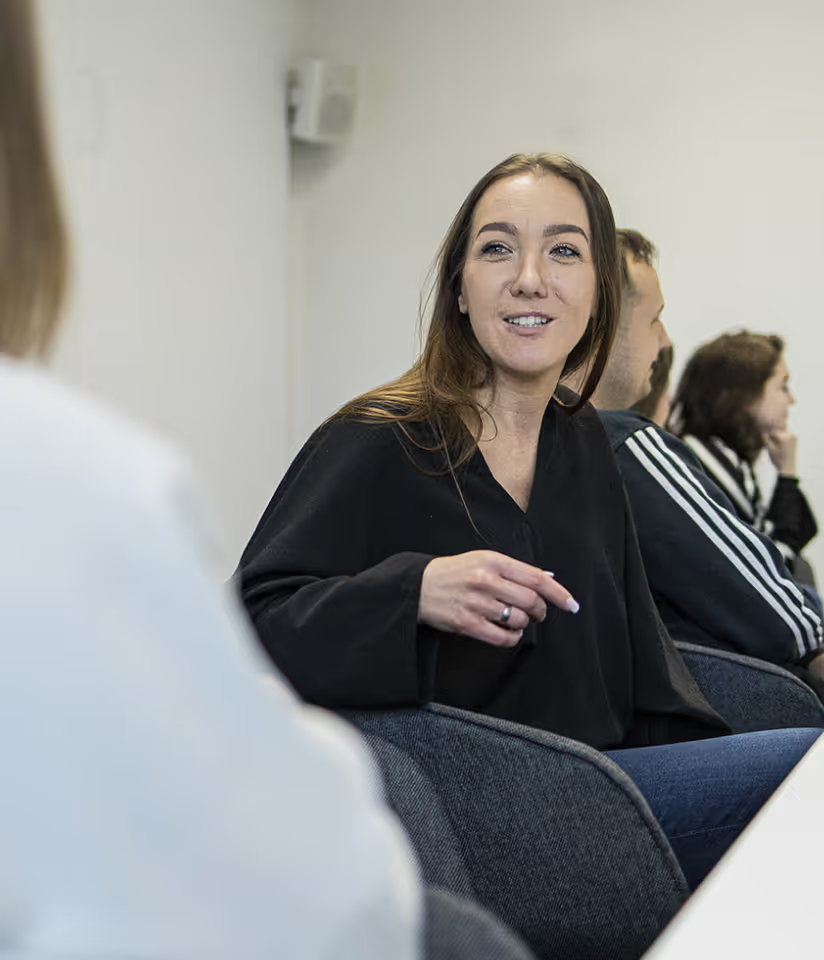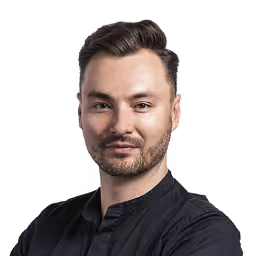We get it.
Outsourcing design
can be daunting

Fact no.3
The
quality
of design
output
might be
compromised



Fact no.1
Onboarding
of designers
might take way
too long

Fact no.2
Domain knowledge
might be lost
with
designers' turnover






That’s why we've redefined design contracting for enterprise-level companies:
Team players
not a group of freelancers
Implementation
oriented designers
Multi-domain
know-how & experience

Trusted by
No fluff, no overpromise.
We fit right into your timeline,
budget & industry-specific needs
EdTech
FinTech
MedTech
Partnership stories
we are proud of
Coming soon
Creating a platform for climate crisis management
Find out how we can elevate your
Product Design













When we are
the best fit?
Tackling
the deadline
and quality
balancing act
Product roadmap
hopes are high
Finding
the right talent
is a nightmare





Why it works?
Don’t just take our word for it:

STX Next has delivered the software, leading to its adoption within the client's business and subsequent project growth. Their team impresses the client with their customer service, AI and product design capabilities, and ability to understand the project well. They also promptly respond to queries.


STX Next has successfully relaunched the client's web and native applications. The team has also launched a premium-tier product and a user-feedback-driven redesign. STX Next showcases impressive communication skills via Slack and works under Scrum methodology, using Jira for project management.

The designs met all requirements and have attracted new clients and prospective investors. STX NEXT is moving into the development stage. The team is highly collaborative, providing creative solutions and responding quickly to inquiries. They’ve delivered high-quality products at exceptional value.

In-depth knowledge
& skillset
UX Design
UI Design
User Research
Auditing & Consultancy
Production Design
Testing & Validation
What is the primary goal of STX Next’s Product Design Team?
In short, we meet the business needs of our clients and solve their problems for them.
We create products, not just software. At any given point during production, we focus on the value our work brings to your business and your end users.
Diverse as they are, our designs are far more than just eye candy—they are functional and useful, first and foremost.
The wide range of services we provide aims to make your product stand out from the crowd and serve your users like no other on the market.
What is the structure of our team?
Our team is built on two core principles:
- The “UX unicorn” is a myth.
- Design is a team sport.
The greatest ideas and solutions are born when you bring together different people with different skill sets and backgrounds. This is why our team always approaches design challenges as a group.
Team spirit and synergy are key. We know each other and work well together as experts in different fields.
Individually, we are:
- UX Designers
- UX Researchers
- Interaction Designers
- Usability Experts
- UI Designers
- Illustrators
- Motion Designers
- UI Developers
Put all of the above together, and you get our Product Design Team—constantly learning and growing to serve you as effectively and efficiently as possible.
What toolbox do you work with?
Our team works Agile and constantly uses new solutions. We never apply the same processes for different clients.
Instead of sticking to a single set of tools, we created our own toolkit of UX-related techniques to better serve the individual needs of our clients. Since we work on projects that vary in both scope and size, it only makes sense to choose the right methods selectively based on the requirements of each project.
We call this the “Toolbox Approach.”
Sketch is the basis for our UI design, but the more advanced graphics, illustrations, or photo manipulations are done using the Adobe suite.
Beyond strictly production tools, software such as InVision is also essential to present the effects of our work to our clients or co-workers.
It also goes without saying that we love to experiment with new tools and solutions whenever we get the chance—that’s what makes the design process so much more fun.
Do you work within a specific design framework?
We favor a variation of the Double Diamond Design methodology combined with the Discover–Define–Deliver flow. It does wonders to make sense of all the available design processes, tools, and methodologies out there.
Our framework of choice serves two basic purposes:
- It provides a clear structure that helps justify our design process, as well as build trust and confidence among the project stakeholders.
- It’s flexible enough to allow us to change tools at will based on the circumstances.
If you’re unfamiliar with the methodology and flow we’ve mentioned—don’t worry. We’ll guide you through it and explain everything step by step.
Do you work closely with development?
Yes, we absolutely do! If you ask us, constant conversation beats the “waterfall” approach any day of the week.
Designing a product doesn’t end with handing over the design specifications to the development team—that’s where it begins. We see the way we work with our developers as a steady stream of constant conversation, adjusting our process to each project individually.
For instance, when we’re building a product from scratch, the Product Design Lead takes the reins in the first stage of development to translate the client’s expectations and the user’s needs to what we like to refer to as the “soul” of the project—the initial functional and aesthetic direction of the process.
Over time, though, we work closely with the Product Owner and the developers to support them in executing the specific design flow and functionalities. The cooperation grows even stronger the closer we get to preparing the final versions of how the end product is supposed to look and behave—the so-called “production designs.”
Adapting our solutions to existing technological limitations or looking for alternatives are some of the greatest design challenges. We see tailoring our ideas to the time and budget as an internal part of the process.
How does the 1 FTE (full-time employee) setup work with you?
We structured our team in a way that allows us to use up the monthly budget to the limits of its effectiveness without the risk of exceeding it.
Each of our projects has a dedicated Product Design Lead who acts as a knowledge facilitator for the team and a single point of contact for the client and the development team.
They also secure and distribute the various talents of the members of our Product Design Team to work on their project for a given period of time. For instance, there might be a greater need for a UX Researcher and Usability Expert in the first phase of the project, while in the later phases the focus may shift toward Visual and Interaction Designers.
To put is simply, the Product Design Lead is responsible for:
- facilitating and organizing knowledge for the rest of the Product Design Team,
- presenting and articulating our design decisions to the client and the development team.
But that’s only the tip of the iceberg as far as the competences of the Product Design Lead go. They also:
- have a deep understanding of the client’s current situation and business goals;
- manage the monthly skill set assembly and workload for the Product Design Team based on current needs;
- manages all the deliverables and developer handoff;
- present, validate, and manage the feedback for all the design decisions made for the product;
- proactively work toward meeting the strategic milestones for the product experience;
- provides product strategy support with the overview of the whole Build–Measure–Learn process;
- are present at the development team rituals and meetings, if needed.
“Why do you use this approach?” you may ask.
Well, for starters, because it’s open, honest, and fair to the client.
We strongly believe that design is a team sport, and the greatest ideas and solutions are born when you bring together different people with different skill sets and backgrounds.
This setup also allows us to be flexible enough to anticipate and allocate our design efforts based on the ever-shifting priorities in the Agile environment. Additionally, working this way creates a sense of group ownership of our projects.
My product is complex. Will you be able to onboard quickly and effectively?
Complex and abstract projects are our specialty. Experience has taught us that we have what it takes to tackle them quickly and tackle them well.
We treat the initial “Discovery” stage of our process very seriously. We believe each product can be described using stories with real-life examples that anyone can understand, no matter the level of complexity. All you need to do is establish the right relationship with the stakeholders, know which questions to ask, and when the time is right to do it.
The first phase of development is when each Product Design Lead acquires knowledge and gets answers to questions like:
- Why are we building what we’re building?
- Who are we building this for?
- Where and when are people going to be using our product?
- What exactly are we supposed to create?
- How do we measure the product’s success?
We use tools and frameworks that allow us to break even the most intricate ecosystems down to the bare essentials and suggest interface solutions that effectively meets the needs of the business and the end user.
Additionally, we do a ton of our own research beforehand on the industry our product will function in, the business context, and the target audience—all to be a better conversation partner for our clients.
What’s the difference between working with you and a marketing agency?
Marketing agencies use a lot of intermediaries who aren’t really competent to discuss design.
Our Product Design Lead, on the other hand, is always a skilled professional who understands design and uses it every day. They talk directly to the team, eliminating any communication friction.
What’s the difference between working with you and a freelancer?
With us, 1 FTE = the sum total of 15 professionals collectively using all of their competences to work on a single product.
With a freelancer, 1 FTE = whatever skills they just happen to have.
Like we said before, the “UX unicorn” is an urban legend. We offer you a range of specialists with different skill sets, who will combine their best qualities in a way that is perfectly suited specifically for your product.
We’re a team, first and foremost—stronger together. And that’s what we’ll bring to your project.
What’s the difference between working with you and in-house designers?
It’s simple, really. We give you all the benefits of using an in-house team, with one key advantage over them: experience in working on a number of different projects in different fields.
True, there’s very little difference as far as the processes are concerned. Our Product Design Leads are close to you, take part in team meetings, have full knowledge of your product.
But our perspective is much wider, since we’ve worked on countless products from disparate industries that couldn’t be more different from each other.
This makes our approach more holistic, our ideas more disruptive, and our solutions more innovative.














